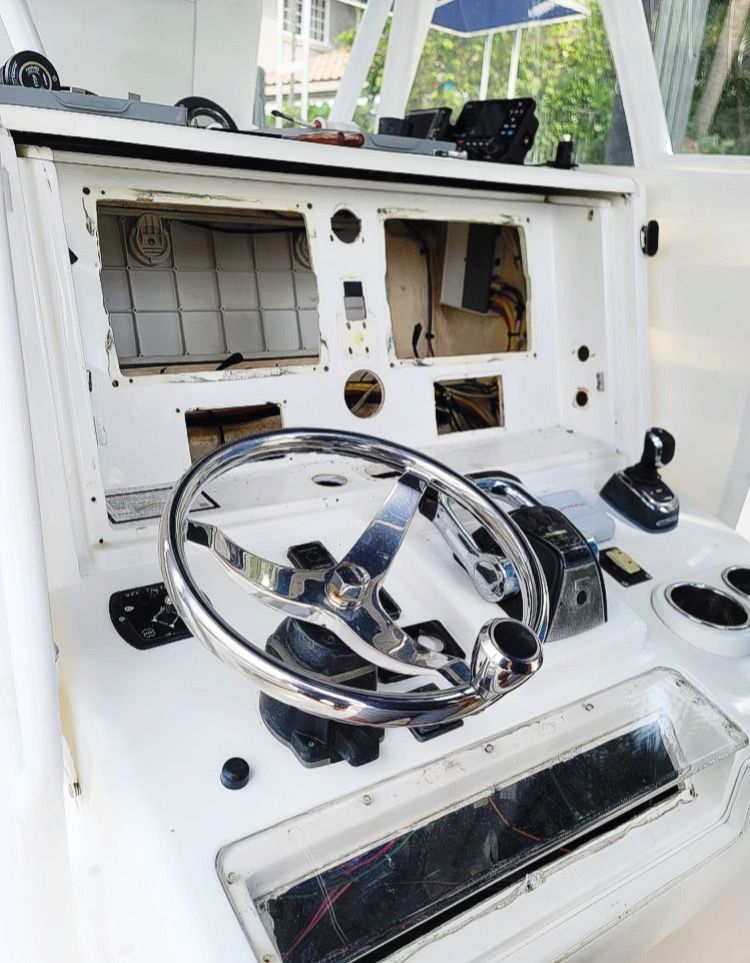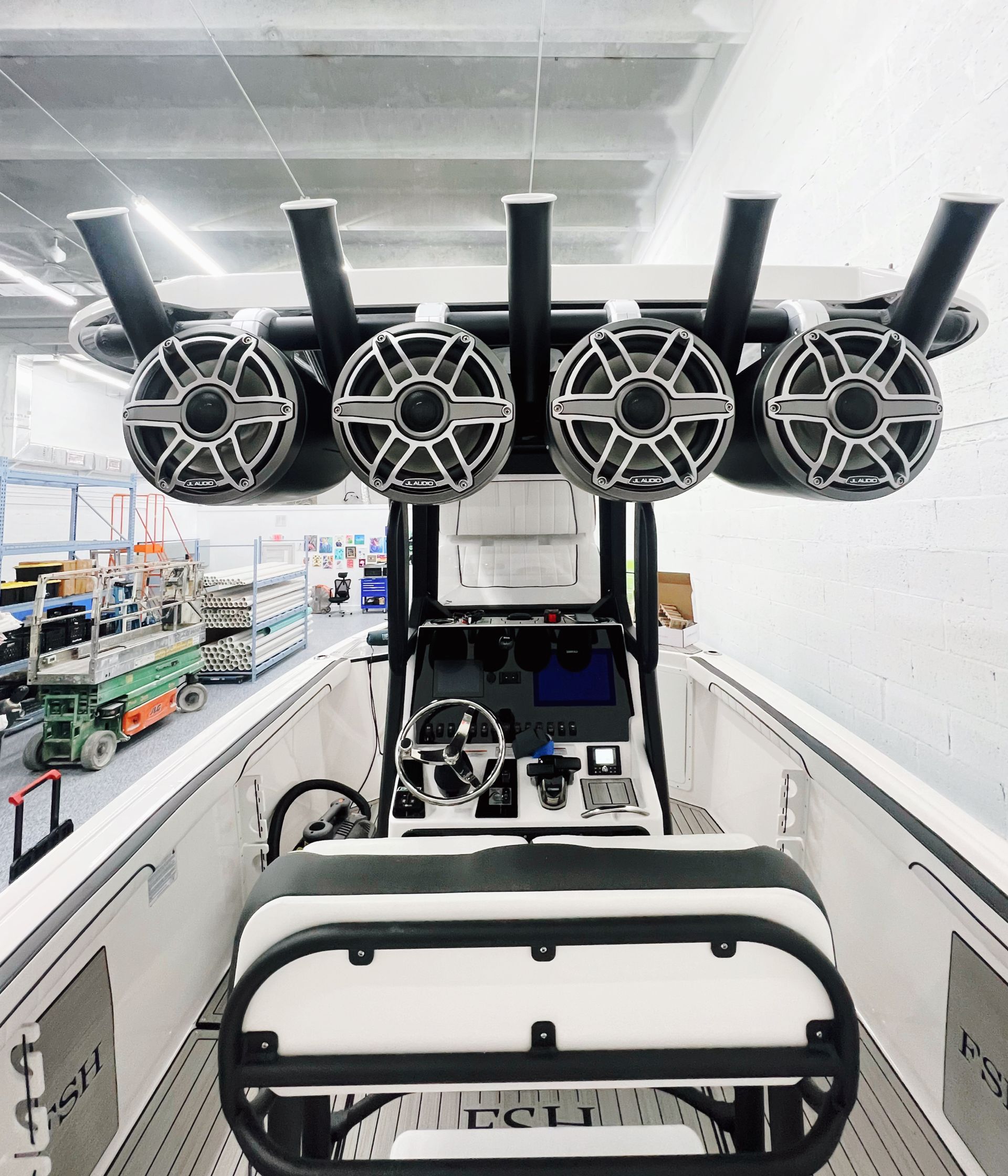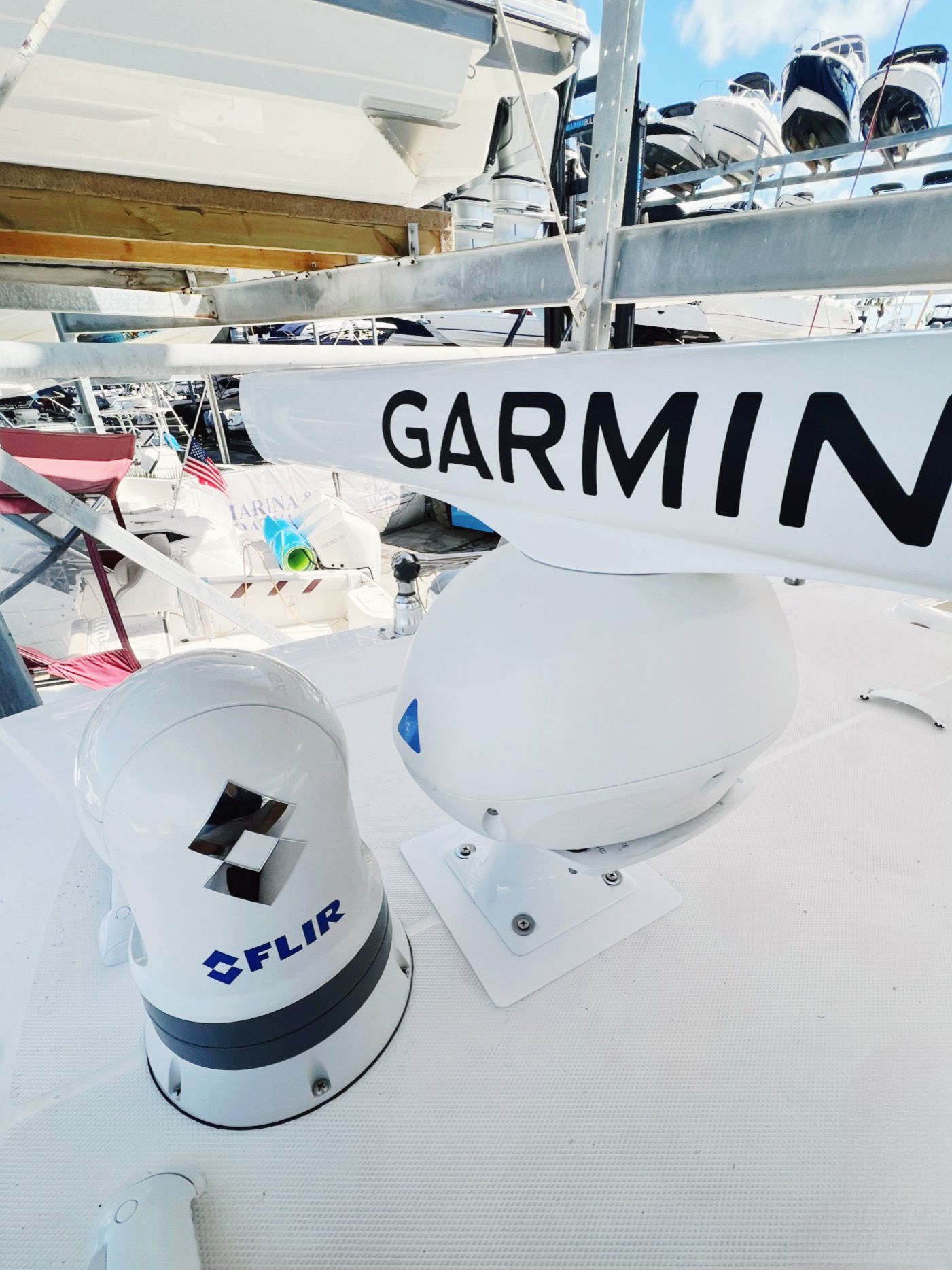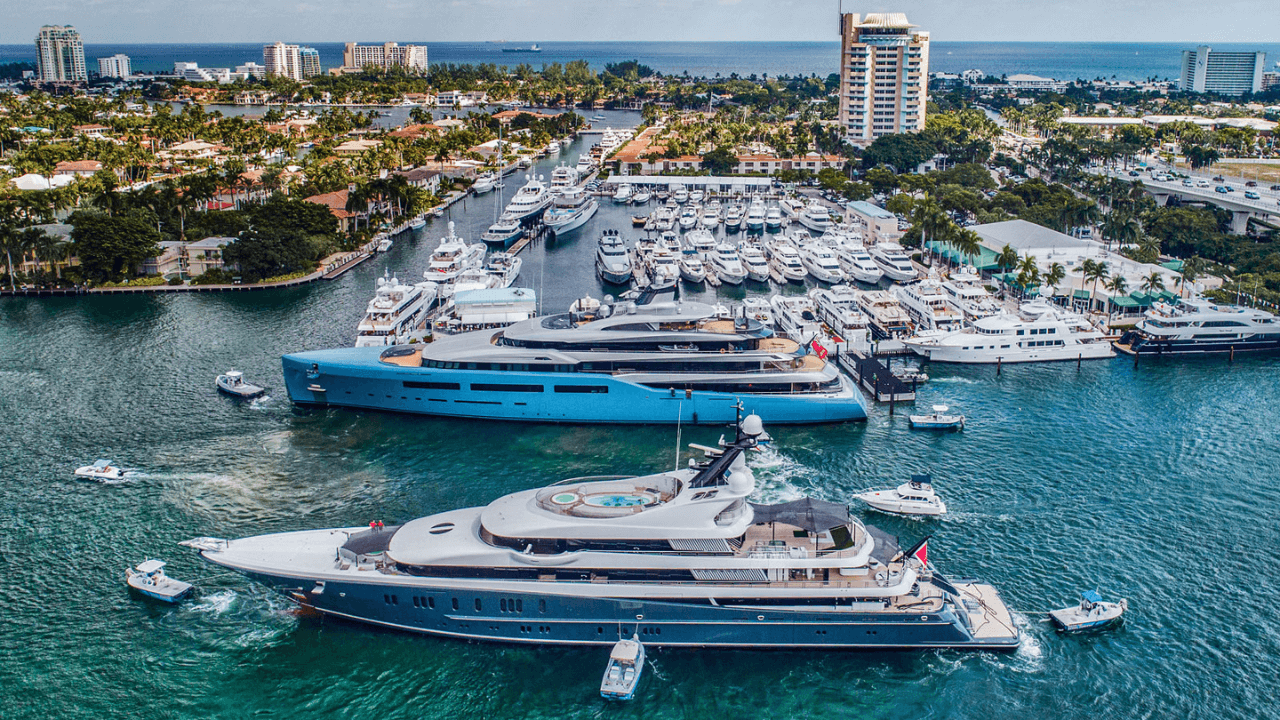7 Essentials of Marine Navigation for Beginners (2023)
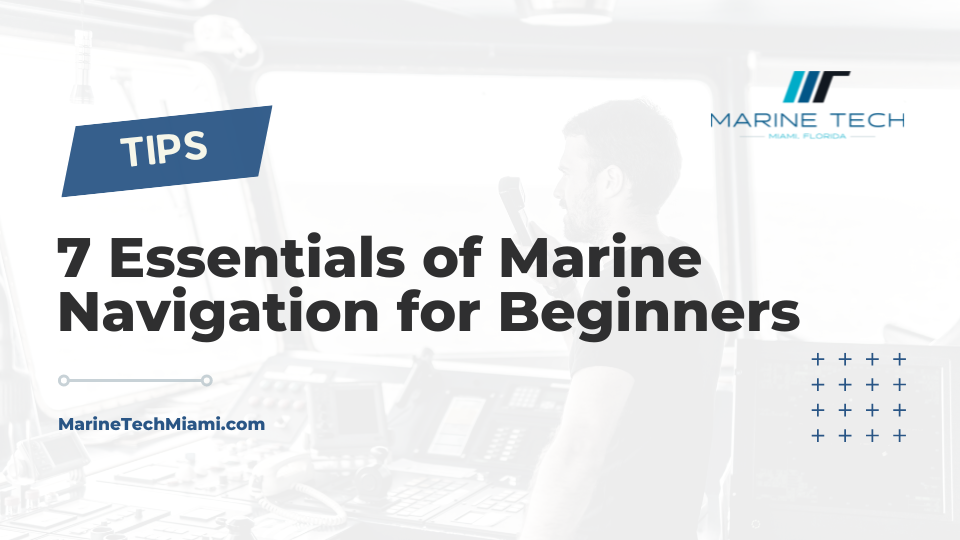
Navigating the vast, open water is no simple task.
It requires a strong foundation of knowledge and a certain level of skill.
As a novice mariner, it is crucial to acquire the right amount of information to ensure a safe and efficient voyage.
This entails understanding the fundamentals ranging from chart plotting to understanding tides and currents.
Additionally, being conversant with safety guidelines and navigation instruments is of paramount importance.
This blog aims to provide a comprehensive guide, helping you take your first step towards becoming a proficient mariner.
Essentials Of Marine Navigation For Beginners
1. Understand Basic Maritime Signals and Symbols
Marine navigation starts with a fundamental understanding of maritime signals and symbols .
These are important because they communicate vital information between vessels, which helps prevent accidents and miscommunications.
There are two primary categories of maritime signals: visual and sound signals.
Visual signals include all the different types of flags, lights, and shapes that are used to communicate different messages, conditions or warnings.
When visual signals are observed, they can provide information about the vessel’s activity, its condition, its intentions and even can signal a distress situation.
On the other hand, sound signals , like foghorns and bells, are used primarily in conditions of reduced visibility (such as fog or heavy rain) or to indicate maneuvers, especially during docking and undocking.
Both types of signals have internationally agreed-upon meanings and methods of use, and must be well understood by all seafarers.
For instance, you should know that a red flag with a white diagonal means that the ship is carrying dangerous cargo, or that three short blasts of a foghorn means a vessel is going astern.
There are also more complex versions of visual signals, such as the International Code of Signals (ICS), which uses flags, pennants, and Morse code to communicate a wide range of messages, in multiple languages.
This system, while not typically necessary for recreational mariners, is used on commercial and military vessels, offering a much broader range of communication possibilities.
Indeed, mastering maritime signals provide a good foundation for any beginners in the world of maritime navigation.
In addition to these physical maritime signals, there are also electronic signals such as AIS (Automatic Identification System) and ECDIS (Electronic Chart Display and Information System) but they require more advanced knowledge and equipment.
By viewing the embedded resource, you will gain a visual understanding of the various maritime flags and their meanings.
This is an important element of practical maritime navigation learning, as it offers a real-time look into how these signals are used and interpreted.
2. Learn to read and interpret sea charts.
Learning to read and interpret sea charts is an integral component of marine navigation.
Sea charts, otherwise known as nautical charts , provide detailed information about the maritime environment, noting key elements such as depths of water, natural and human-made features, and potential hazards.
At first glance, they may seem overwhelming in their complexity, but practice and focus can lead to expertise.
It’s crucial to remember that despite technological advancements, the traditional methods of navigation, including ability to read ocean charts, remain relevant and vital.
This concept underscores the ubiquity of sea charts in navigational practices today.
Even with the availability of GPS and other high-tech navigational tools, no device can substitute the importance and irreplaceability of understanding sea charts and the wealth of information they harbor.
A sea chart displays the positioning of coastlines , the depth of the water body, the location of navigation aids like lighthouses and buoys, and details of the sea floor.
A good rule of thumb is to always keep your charts current, as the maritime environment is continually changing.
Updates and modifications to channel markers, buoys, lighthouse operations, or construction may all affect the accuracy of your chart.
Paying close attention to the charts legend and scale is also a crucial aspect of correctly reading a sea chart.
The legend carries the symbols and notations used on the chart, and their meaning, while the scale gives the ratio of a distance on the chart to the actual distance on the ground.
There are various types of charts, each with its different level of detail and purpose .
For instance, a harbor chart offers a large-scale, highly detailed look at harbors and their entrances, while a coastal or general chart provides a broad overview of larger sections of coasts or offshore areas.
Understanding and recognizing topographic details like water depth could mean the difference between sailing smoothly and potentially running aground.
Therefore, it is important to know how to interpret the numerical scale and depth contours on charts.
Colors on a chart also have important meanings.
Shades of blue are generally used to indicate water depth , with darker blues signifying deeper water and lighter blues for shallower areas.
Lastly, one of the invaluable tips while using charts is checking your compass frequently and comparing its readings to your chart.
This process is known as ‘taking bearings’ , and it helps verify your position and the direction you’re heading.
Mastering chart interpretation is a steady process that takes time, patience, and attention to detail, but it is undeniable that learning how to read and interpret sea charts is essential for anyone venturing out into the open water.
3. Master usage of basic navigational instruments
Understanding the usage of basic navigational instruments is an essential aspect of marine navigation for beginners.
These instruments provide critical data that assists in understanding your current location, maintaining your route, and avoiding any potential hazards in the sea.
One of the main tools you should become comfortable with is the compass .
Marine compasses not only point north, but also provide the compass heading of the vessel and are a critical reference point when making course adjustments.
Another critical instrument to master is the sextant. This versatile and traditional tool plays a crucial role in accurately determining latitude and longitude.
Despite its complexity, the sextant is an extremely rewarding instrument to master as it hones your skills in celestial navigation.
Another valuable instrument is the depth sounder , also known as a sonar. These devices send pulsed sound waves down through the water and measure the time it takes for the echo to return, thereby determining water depth.
Knowledge of water depth is essential for preventing grounding and collisions with underwater obstacles.
The Global Positioning System (GPS) has revolutionised marine navigation , allowing mariners to determine their exact location, speed, and course.
However, despite the ubiquity and convenience of GPS, it is vital for a mariner to remain proficient in using traditional navigation instruments especially during GPS signal failure or errors.
To further enrich your understanding of navigational instruments, you are encouraged to engage with this informative resource .
The video provides practical demonstrations and explanations, which will, no doubt refine your mastery of these essential tools.
Be it compasses, sextants, depth sounders or GPS, each instrument has its unique strengths and purposes. Collectively , they equip a mariner with reliable navigation capabilities under various sea conditions.
Keep in mind that no single instrument is foolproof or effective in isolation, understanding how to effectively use a combination of these tools can greatly enhance your confidence and competence in marine navigation.
Above all, consistent practice and experience play a crucial role in mastering the art of marine navigation.
Remember, navigational proficiency is not merely about knowledge but the ability to apply that knowledge to make sound judgments in a dynamic and challenging marine environment.
4. Know the maritime rules and regulations
The marine world has its own unique set of rules and regulations in place to ensure safety, security and efficiency. These maritime rules and regulations span across a variety of areas including navigation, vessel design, equipment, crewing and operational procedures and are enforced by flag state, port state, and coastal authorities.
As beginners in marine navigation, it is crucial to become well-versed with these laws and regulations. They not only enhance sailor’s expertise in navigation but also help prevent marine accidents.
Having comprehensive knowledge of maritime rules and regulations sets a strong foundation for marine navigation.
This emphasizes not only the importance of understanding these rules but also knowing how to apply them in a real-life scenario. Knowing what the laws demand and incorporating them into your sailing routine can mean the difference between a smooth voyage and a disastrous one.
All mariners must learn about international maritime laws , especially the United Nations Convention on the Law of the Sea (UNCLOS). It can be referred to as the ‘constitution of the seas’, providing a universal legal framework for the rational use of the oceans and their resources.
The SOLAS (Safety of Life at Sea) is another significant international treaty that related to the safety of merchant ships. Its primary objective is ensuring the safety of the ship’s crew and passengers.
Then there are the regional and country-specific laws like the Jones Act in the United States that manages maritime commerce, crew rights, and related matters. Having a good grip on these national specifications is equally important for marine navigation.
In addition to the larger laws and conventions, mariners are also required to comprehend and follow the International Regulations for Preventing Collisions at Sea (COLREGs) . The “rules of the road” are paramount to preventing ship collisions, which could have devastating environmental and human impacts.
Maritime rules and regulations are not just about understanding them, but also about proficiently applying them into real-life situations while sailing.
These rules are not just for ensuring smooth operations but also play a pivotal role in ensuring the safety of life onboard, protecting the marine environment and securing efficient maritime commerce.
Knowledge about reporting and record-keeping requirements is another vital aspect of being a responsible mariner. Any unusual events, accidents, or incidences of pollution should be accurately reported to the concerned authorities.
Additionally, knowledge of laws and conventions like MARPOL (Marine Pollution) is necessary to comprehend the regulations concerning the prevention and minimization of pollution from ships .
Lastly, all seafarers are required to undergo several training and certification courses such as STCW (Standards of Training, Certification and Watchkeeping). Ensuring that your certifications are up-to-date and compliant with the latest rules and amendments is also a key element of safe marine navigation .
Essentially, knowing these maritime laws not just helps the mariners avoid legal troubles but also profoundly increase their confidence and competence in marine navigation.
This understanding also empowers them to make informed decisions in a plethora of situations –from navigating though crowded waters to dealing with technical failures, thereby complementing their practical navigation skills significantly.
5. Develop skills in celestial navigation techniques
As a beginner mariner, it’s essential to understand the significance of celestial navigation techniques .
This means learning to utilize the celestial bodies – the sun, moon, planets, and stars – as a guide for direction and location .
Before the invention of GPS and sophisticated electronic navigation systems, celestial navigation was the primary way mariners navigated the vast oceans, and it remains a valuable skill to this day .
One of the first techniques you’ll learn in this regard is astro-navigation , which involves using angles between the horizon and celestial bodies to work out your position.
Understanding and using celestial navigation techniques correctly can be a literal lifesaver in situations where modern navigation technology fails or becomes inaccessible.
This statement holds true because reliance on modern technology can sometimes prevent us from being fully prepared for unforeseen circumstances.
If all navigational aids were to fail, knowledge of celestial navigation would be your only chance at finding your way.
Therefore, this primitive, yet effective technique deserves thorough understanding and practice.
By watching the aforementioned video, you may gain a better appreciation of celestial navigation techniques and their practical applications.
This visual content is especially useful for beginners as it clarifies many concepts that may seem complex in theory, providing a more tactile grasp of celestial navigation.
Fundamental to celestial navigation is developing skills in using a sextant , a device that measures the angle between an astronomical object and the horizon for use in celestial navigation.
With the help of a nautical almanac, these angle measurements can allow a mariner to chart a ship’s course correctly.
Understanding how to read and use a sextant effectively along with interpreting a nautical almanac is a big part of your celestial navigation training.
While it might look complicated at first sight, practice and patience will make you comfortable with it in no time.
While celestial navigation skills are vital, it’s also important to recognise that this is not a standalone technique.
It is typically used in combination with other navigational skills, such as dead reckoning and pilotage, to confirm positions and avoid navigational errors.
The ability to use celestial navigation as a resource in this digital era not only holds historical significance, but also provides safety and back-up in case of failure of advanced electronic systems on the vessel.
Above all, proficiency in celestial navigation methods will be a testament to your versatility and breadth of skills as a mariner.
6. Practice Coastal Navigation and Pilotage
In the context of marine navigation for beginners, grasping the concepts of coastal navigation and pilotage is crucial.
These aspects involve using fixed landmarks or aids to navigation as reference points to guide mariners towards their destination.
It is important to note that coastal navigation, often referred to as ‘piloting,’ is typically done in waters near the shore.
This type of navigation requires intimate knowledge of the seafloor, as well as local tide and current conditions.
Pilotage on the other hand, while similar to coastal navigation, is a more advanced method that requires a licensed or certified pilot.
The pilot’s role is to guide ships through hazardous or congested waters, such as harbors, straights, and river mouths.
Therefore, understanding coastal navigation and pilotage, and practicing these regularly, enhances safety and ensures smooth sailing.
Practical experience in coastal navigation and pilotage is key to gaining confidence and becoming adept at marine navigation.
This quote highlights the importance of continual practice in these areas.
Having theoretical knowledge alone is not sufficient; it must be paired with consistent practical application.
As with any skill, the more you practice, the more proficient you’ll become.
Utilize tools like nautical charts, compasses, and even modern technology to aid in your navigation practices.
Practice will enable you to determine your position, plot a course, and steer the ship accurately.
When practicing, it’s also crucial to consider potential hazards such as underwater rocks, reefs, and changes in water depth.
Having the ability to properly read nautical charts and understand various navigational aids can assist in avoiding these potential dangers.
Part of being a successful mariner is being prepared for every scenario, and coastal navigation and pilotage are vital parts of that preparation.
Remember, navigation is not a static process; it necessitates constant updating and action based on current conditions and surroundings.
So, keep practicing and honing your skills in coastal navigation and pilotage, and you’ll be well on your way to becoming a competent mariner.
7. Familiarise with Emergency Measures and Procedures
In the realm of marine navigation, it is essential to familiarise yourself with emergency measures and procedures for safety.
When sailing, especially in unfamiliar waters, unexpected events can occur, and having a good understanding of emergency procedures can make a significant difference in dire situations.
Safety equipment like lifejackets, life rafts, EPIRBs, and flare kits are all crucial components to manage emergency scenarios at sea.
Moreover, knowledge about emergency signals, such as distress signals and flares, is vitally important to be able to communicate with other vessels or shore facilities during emergencies.
One of the most critical aspects in the array of marine emergency procedures is understanding the steps involved in abandoning ship.
This understanding is crucial because such a decision cannot always be planned in advance and is frequently required in sudden, high-stress situations.
Being prepared for these situations by knowing the correct sequence of actions, which includes sending a distress message, gathering essential items, crew assembly, and safe abandonment, can save lives.
In addition to this, recognising symptoms of common illnesses at sea – such as hypothermia, dehydration or seasickness – can be pivotal in maintaining well-being aboard.
Building the ability to perform basic first aid can prevent the worsening of certain conditions, especially in cases where professional medical help could be hours, if not days, away.
Moreover, embracing survival techniques, like rationing food and water, creating a shelter on a life raft, or knowing fishing techniques, can prove beneficial when stranded at sea.
Besides, regular drills for various emergencies make the crew members more adept and confident in dealing with real-life situations.
These drills teach how to use the available equipment efficiently, exit the vessel in a methodical manner, or even survive in water until help arrives.
A well-executed drill often has a calming effect on the crew in a real scenario, allowing them to focus on the task at hand effectively.
As a novice mariner, investing in courses or certifications that teach you these emergency measures and procedures can be invaluable.
Watching this video can provide valuable insights on vital emergency procedures, demonstrating practical applications of what has been discussed.
By visualising these procedures carried out, you could be able to remember them more easily and effectively perform them in an emergency situation.
In essence, the time and efforts spent on getting familiarised with these emergency measures and procedures is not just a matter of compliance with maritime laws, but it is an investment in safety, potentially saving lives including yours.
The Bottom Line
Mastering the skill of maritime navigation involves a comprehensive understanding of various factors.
These include recognizing crucial maritime signals and symbols, interpreting sea charts, and using basic navigational instruments effectively.
Ensuring compliance with maritime rules and regulations is equally integral, just as acquiring proficiency in celestial navigation techniques.
Honing practical skills in coastal navigation and pilotage is also necessary to maneuver effectively in diverse situations.
Additionally, arming oneself with knowledge of emergency measures and procedures equips one to contend better with any sudden crises.
Therefore, for anyone looking to excel in maritime navigation, it’s imperative to refine these skills.
The world of navigation is complex, but with the right preparation, it’s possible to turn the tide in your favor.
Contact Us
Contact Us
Recent Posts
CONTACT US
Looking to upgrade your marine electronics?
With more than 25 years of experience, we can help you get started today!

